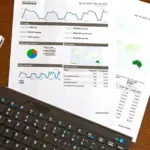Do you usually wonder how to get the attention of users who are significantly interested in the products or services on your website? Or how to keep these prospects on your website? You will get the answer in the following blog post. We will explain to you how to take advantage of your website potential with SEO. Here we go!
Is your website technically SEO optimized?
Search engine optimization, or SEO for short, is part of online marketing. The aim of SEO is to improve visibility in search engines such as Google. In order to make your website more visible, first of all you need to check whether it is technically optimized. If the website is up to date, it can be found and interpreted by search engines and users. However, errors can be encountered in the presentation of the content, since programmers and web designers are usually not SEO specialists. If the website is not built in accordance with search engines, Google cannot find it.
Technical SEO Checklist:
- Page Title: Does it reflect the page topic?
- Internal links: Are important articles linked on the home page?
- Robots.txt file: Can the website be crawled by search engines?
- Redirects: Are changed URLs redirected correctly?
- Directories: Is the website well-structured with few directories?
- Https: Is there an SSL certificate installed?
- Load times: Are load times good?
- Canonical Links: Are Canonical Tags Required? If yes: are they available?
Which search terms are used to search for the products?
In addition to the technical part, it is important to optimize keywords. Find out which search terms are used to search for your products and services.
Keyword Optimization Checklist:
- What terms do you want to be found under?
- Does the competition book on these keywords? What is the content like on the competitor’s website?
- Adjust your search terms: think of synonyms, different word combinations and variations.
- Our tip: Enter the possible keywords on Google and let Google Suggest show more variants.
- Use Google Ads’ Google Keyword Planner. It is a free tool.
- Attention: Your goal should be to rank with the keywords on the first search results page of Google. The more relevant the keyword is for your content, the better.
Is the content SEO optimized?
Relevant content is more attractive and generates more traffic. Ideally, your website should be visible to all the search terms related to your products or services. Well-prepared and particularly useful content that solves users’ problems is rewarded by Google with good positions among relevant keywords.
Checklist for SEO content:
- Does the title include the keyword?
- Does the content answer all possible questions on the topic?
- Are the keywords stored frequently enough in the text?
- Are important terms highlighted in bold in the text?
- Is the content informative and concise?
- Are there paragraphs including subheadings?
- Does the text contain enumerations and lists?
- If necessary, are pictures and videos available instead of long text descriptions?
- Does the content end with a call-to-action (“Order now!”, “Sign up to our newsletter”)?
- Is the content competitive if compared to that of the other top-ranking articles?
- Is the content relevant to the target audience?
- Can the page be found? Is it internally linked?
Is the content planned to be spread across all channels?
Optimized websites should always be marketed. Content can be made publicly visible with the help of seeding. There is a suitable channel for every content. Clearly state the added value of your content to the customer. Content needs to be viewed and shared frequently to be considered relevant. Place your content appropriately on the channels relevant to your target group. Content seeding uses both free and paid channels.
Free channels include home pages. Always place particularly relevant topics there. In addition to newsletter, use social media channels, blogs and forums to share your content. Lastly, use SEO to make your content visible.
Paid channels for content seeding include sponsored posts, paid social media campaigns and Google Ads.
Control your success
Measure your progress weekly. In SEO, it can take weeks to months to see success. As your content visibility increases, so will your website traffic and conversions. Always work on optimizing your SEO. This way you will be successful in the long run and build basic brand awareness.
You can easily measure the success of your pages and keywords with the help of some SEO tools. Use Google Search Console, Google Analytics and SEO tools like SEMrush and Sistrix. So you can always monitor the performance and rankings of your website.
Conclusion
Regular SEO optimization of your homepage is essential in order to be able to make your content visible. Follow the tips provided by us. If your website is technically optimized and up to date, it can be found by search engines and users. Make sure you are visible for relevant keywords and optimize the content on your website. Relevant and attractive content is rewarded by Google with good positions for relevant search terms, generating more traffic. Place your content on the relevant channels of your target audience. Check your SEO optimizations regularly to take advantage of your website’s full potential.
Do you need additional help or do you have further questions regarding SEO optimization of your website? As a full-service SEO agency, we can help you at any time. Feel free to contact us!





